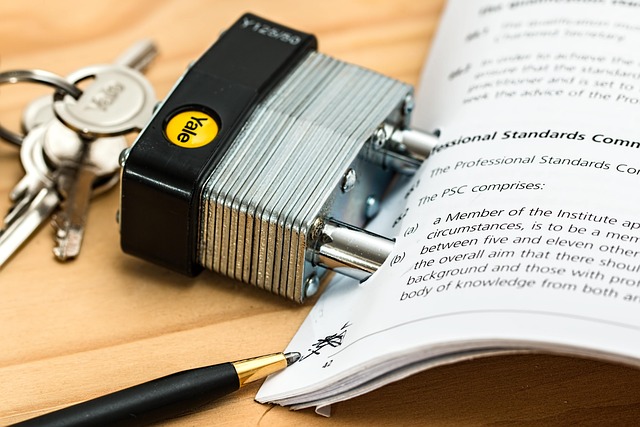Oregon's Child Welfare Court acts as a protective guardian for vulnerable children, with exclusive jurisdiction over abuse, neglect, or potential harm cases. Understanding the court's procedures and jurisdiction is vital for parents, guardians, social workers, and attorneys to navigate the legal landscape effectively. This comprehensive guide provides essential knowledge on Oregon child welfare court processes, empowering stakeholders to actively participate in decisions affecting their children and ensuring transparency. By grasping these court procedural insights, individuals can make informed choices throughout the process, prioritizing the best interests of the child for safe and stable outcomes.
“In Oregon, the child welfare court system plays a pivotal role in ensuring the safety and well-being of vulnerable children. This comprehensive guide delves into the intricate world of court procedures for those navigating the Oregon Child Welfare Court. From understanding jurisdiction to post-court case management, we provide crucial insights for agencies, parents, and advocates. By exploring pre-court preparations, courtroom roles, and step-by-step hearings, this resource equips readers with essential knowledge to effectively participate in and contribute to the court process, ultimately supporting the best interests of children involved.”
- Understanding Oregon Child Welfare Court Jurisdiction
- Pre-Court Proceedings and Involvement of Agencies
- The Court Hearing: A Step-by-Step Guide
- Roles of Key Participants in the Courtroom
- Post-Court Decisions and Ongoing Case Management
Understanding Oregon Child Welfare Court Jurisdiction

Oregon’s Child Welfare Court plays a pivotal role in ensuring the safety and well-being of vulnerable children within the state. Understanding the court’s jurisdiction is essential for all stakeholders involved, including parents, guardians, and social workers, as it forms the basis for navigating the complex court procedures. This court has exclusive jurisdiction over matters concerning the care and protection of children who are alleged to be abused, neglected, or at risk of harm.
The court procedures in Oregon are designed to provide a structured and fair process for all parties. These insights guide individuals through the legal framework, ensuring that everyone understands their rights and responsibilities. By familiarizing themselves with the jurisdiction and court processes, parents and guardians can actively participate in cases affecting their children’s future, fostering transparency and ultimately contributing to positive outcomes for the youth under their care.
Pre-Court Proceedings and Involvement of Agencies

In Oregon, child welfare proceedings typically begin with a report of suspected abuse or neglect made to the Department of Human Services (DHS). This triggers a comprehensive assessment and investigation to determine the safety and well-being of the child(ren) involved. DHS works collaboratively with various agencies, including law enforcement, medical professionals, and community organizations, to gather evidence and make informed decisions regarding the child’s future. If the initial findings support the allegations, DHS files a petition in court, initiating the official Oregon child welfare court process.
Navigating court procedures in Oregon child welfare cases is crucial for all involved parties. Agencies play a vital role in providing necessary resources and information to the court, ensuring that the best interests of the child are at the forefront. This includes preparing reports, testifying, and offering recommendations based on their expertise. Understanding the court process is essential for families to actively participate, make informed choices, and stay connected throughout these proceedings.
The Court Hearing: A Step-by-Step Guide

In the Oregon child welfare court, a case conference is where the journey of a child’s protection and well-being begins. Here’s a step-by-step guide to help navigate this crucial process. First, all parties involved—social workers, parents or guardians, attorneys, and the child (if age-appropriate)—gather in court. The judge then reviews the case plan, which outlines the goals and steps for reuniting the family or finding a suitable permanent home for the child. This is an opportune moment to voice concerns, ask questions, or request changes to the plan.
Next, the court hears evidence from witnesses, including social workers who present their assessment of the family’s progress and the child’s current living situation. Parents or guardians are given the chance to share their perspective as well. The judge carefully considers all information presented, makes decisions on pending matters (like temporary custody or visitation), and sets deadlines for future hearings. Understanding these court procedures in Oregon is essential for ensuring your rights and actively participating in the child welfare process.
Roles of Key Participants in the Courtroom

In any Oregon child welfare court proceeding, several key participants play vital roles in ensuring a fair and efficient process. The judge presides over the hearing, making critical decisions and ensuring adherence to legal procedures. Social workers from the Department of Human Services (DHS) present evidence and advocate for the best interests of the child, while attorneys represent both the child and any involved parents or guardians. These professionals work together to navigate the court procedures in Oregon, aiming for outcomes that prioritize the safety and well-being of the minor.
Understanding these court procedural insights is crucial for anyone navigating the Oregon child welfare court system. Parents or guardians are encouraged to be active participants, attending hearings and staying informed about their rights and responsibilities. Courtroom observers, including caseworkers, advocates, and community members, play a supporting role in monitoring proceedings and ensuring transparency. This collaborative approach helps foster a comprehensive understanding of the complex dynamics within the child welfare court guide, ultimately contributing to more effective decision-making.
Post-Court Decisions and Ongoing Case Management

After a hearing in an Oregon child welfare court, the judge will issue a decision based on the evidence and arguments presented. This decision may include various outcomes, such as returning the child to their parent(s), placing them in foster care, or terminating parental rights. Regardless of the outcome, post-court decisions involve careful case management to ensure the best interests of the child are maintained.
Navigating court procedures in Oregon child welfare cases requires ongoing communication between all involved parties—social workers, attorneys, parents, and guardians ad litem. Regular check-ins, progress reports, and supervised visits (if applicable) help keep the case on track. This continuous management ensures that any changes or concerns are promptly addressed, promoting a safe and stable environment for the child while they navigate their legal proceedings.
